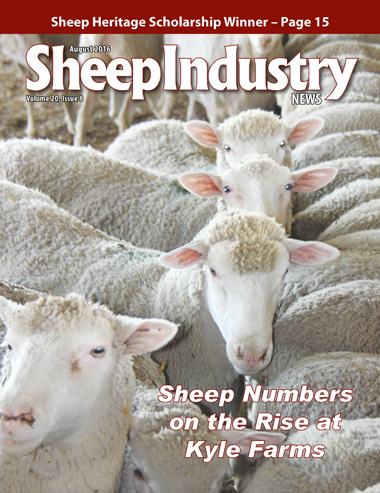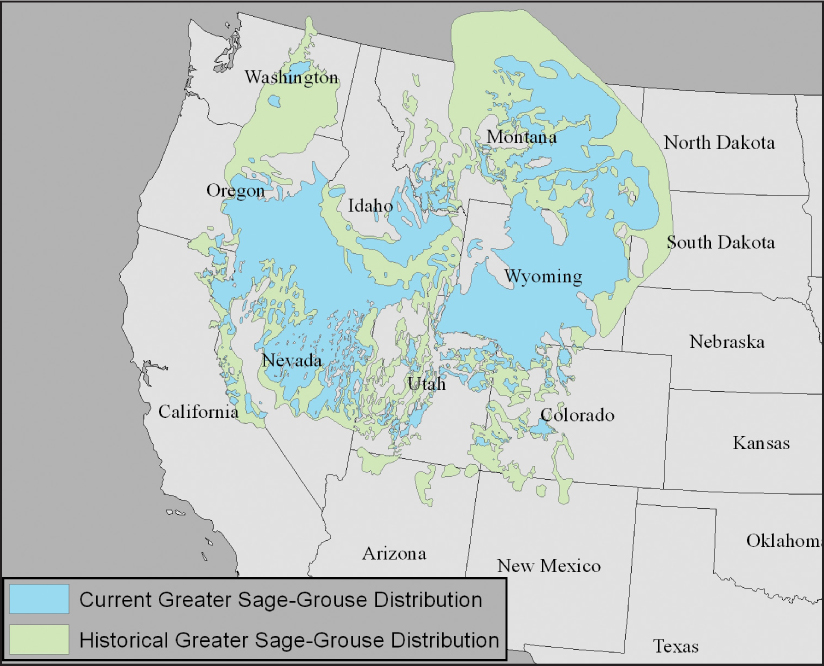
- August 2016
- President’s Notes
- Reverse Trade Missions Spur Wool Sales
- Population Explosion at Kyle Farm
- Wool Council Conducts Yearly Meeting
- No Transparency in Fed’s Sage Grouse Plans
- Posbergh Earns Foundation Scholarship
- Photo Contest Deadline Approaching
- Cuba Open to US Meat
- Q&A: Montana Sen. Steve Daines
- Around the States
- Market Report
- The Last Word
No Transparency in Fed’s Sage Grouse Plans
Concerned that forthcoming federal sage grouse management plans will have an adverse affect on both livestock grazing and the very animal they were designed to protect, Public Lands Council President Brenda Richards testified in late June before the Senate Energy and Resources Subcommittee on Public Lands, Forests, and Mining.
Richards message, as echoed by PLC Executive Director Ethan Lane in a recent interview, is that federal management plans are being put together without the input of the western ranchers, state governments and local agencies who are most familiar with sage grouse issues in their respective regions.
 “What we’re going to get is a broken federal plan that only gets in the way of state management plans that have already proven to be effective at the local level,” Lane said. “They aren’t responding to what works in those local areas, but are crafting a federal, one-size-fits-all solution that will negatively affect public lands, ranchers and even sage grouse.”
“What we’re going to get is a broken federal plan that only gets in the way of state management plans that have already proven to be effective at the local level,” Lane said. “They aren’t responding to what works in those local areas, but are crafting a federal, one-size-fits-all solution that will negatively affect public lands, ranchers and even sage grouse.”
The decision to not list sage grouse as an endangered species in 2015 was met with a sigh of relief among those grazing public lands in western states. But the federal management plans from the U.S. Forest Service and the Bureau of Land Management might very well be worse than an endangered species listing.
“We have no way to know for sure at this point because we haven’t been a part of the process,” Lane said. “This would be so much easier if the federal agencies involved would bring everyone to the table early on in the process. They also need to respect the fact that sage grouse populations have increased dramatically under state management and local programs.”
Public lands grazers hope Senate leaders will remember what they learned in the June hearing when it comes time to pass appropriations and defense spending bills later this year. Sage grouse language has been included in both bills.
“We do feel better that the senators heard our point of view on what was supposed to be a very open and collaborative process,” Lane said. “That hasn’t been the case from our point of view.”
Richards went into greater detail in her testimony during the hearing.
“Since the online newspaper Greenwire leaked the BLM’s draft Grazing Implementation Memo and Implementation Guide several months ago, our industry has repeatedly requested that BLM engage us in the finalization of this guidance. Repeatedly, those requests have been denied,” she said. “To date, our only reference for what this guidance might look like comes from the leaked documents found online. We have been told repeatedly that we will get to see the documents once they are completed and ready for implementation – well past the point where we, as critical on-the-ground partners, could offer any constructive input into the process.”
Lane called upon those affected by public lands issues to encourage their congressional representatives to support the “Bishop Language.” Utah Rep. Rob Bishop has offered amendments that would prevent the implementation of federal plans over state plans for sage grouse habitat.
Federal plans were expected to be introduced in early August, but Lane called previous promises in this area, “a rolling series of unmet expectations.”
Changes, which could include limits on grazing, could be used on an interim basis for the first year after implementation. There also appear to be differences in the FS and BLM plans.
“The Forest Service is taking a much more measured approach it appears, while the BLM wants to roll things out much faster. They are headed for the finish line come hell or high water. What we would prefer is for these agencies to let the states continue to do what they are already doing well.”

